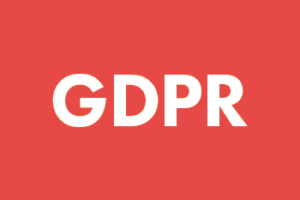Google concluded its defense in the Department of Justice’s lawsuit over its advertising technology, making its case for why the DOJ’s claims miss the mark.
Even though Nobel Prize-winning economist Paul Milgrom provided supportive testimonies, it’s still easy to see that Google’s testimony could have gaps.
Here are my favorite ones:
1. “Duty to deal” argument
Google’s stance: Google argues that it should not be required to share its ad tech tools or platforms with competitors, as there is no legal obligation for a company to do so under U.S. antitrust laws.
Potential gap: The DOJ might argue that while there is no explicit “duty to deal” under current law, Google’s dominance in the digital ad space as a whole effectively forces advertisers and publishers to rely on its tools. This could open the door to claims that Google’s practices limit competition by creating barriers for smaller players, even if there is no formal requirement to share resources.
2. Narrow market definition
Google’s stance: Google claims the DOJ’s market definition is too narrow, focusing on “open web display advertising” rather than a broader range of ad formats and markets.
Potential gap: While Google highlights competition from other digital ad platforms (like Amazon, Facebook and Microsoft), the DOJ could argue that Google holds overwhelming power in the specific subset of open web display ads. If the DOJ can successfully define the market more narrowly and demonstrate Google’s dominance, it could strengthen its antitrust argument. Whether Judge Brinkemma will allow this change in definition would be critical to this potential advantage.
3. Defunct practices
Google’s stance: Google asserts that many of the challenged practices – except for Uniform Pricing Rules (UPR) – are no longer in use, weakening the DOJ’s claims.
Potential gap: The DOJ may counter that even if these practices are defunct, they could have had long-lasting effects on market structure and competition. Practices like Dynamic revenue, reserve prize optimisation and more would have a long-term effect. These past practices might have entrenched Google’s dominance and limited competitors’ abilities to grow, resulting in reduced competition today.
4. Self-serving justifications for integration
Google’s stance: Google argues that its integrated tools benefit both advertisers and publishers by providing a safer, cheaper and more effective platform.
Potential gap: The DOJ may argue that this integration, while convenient, could also be seen as self-serving and exclusionary. The integration of Google’s ad tech stack may prevent third-party companies from offering competitive services and lock users into Google’s ecosystem, making it harder for other companies to compete.
5. Control over the ad ecosystem
Google’s stance: Google insists that publishers and advertisers have control over how ads are bought and sold, with multiple options to mix and match ad tech tools.
Potential gap: The DOJ could argue that despite this theoretical control, Google’s overwhelming market presence effectively limits meaningful alternatives. Publishers and advertisers may be forced to use Google’s tools to stay competitive, creating a de facto monopoly in certain aspects of the ad tech market.
6. Competitive landscape
Google’s stance: Google cites competition from other tech giants like Facebook, Amazon and Microsoft as evidence that the ad tech space is fiercely competitive.
Potential gap: The DOJ may argue that the competition Google points to exists in adjacent markets, such as social media advertising or ecommerce ads. Within the specific market for open web display ads, Google may still hold a monopolistic position, and competition in other areas doesn’t fully mitigate its control over this segment.
7. Impact on consumers
Google’s stance: Google frames its practices as consumer-friendly, emphasizing lower fees and improved ad performance.
Potential gap: The DOJ could focus on the broader implications of reduced competition, such as the potential for higher prices for advertisers in the long term, fewer choices for publishers and an overall reduction in innovation. The DOJ may argue that even if short-term costs are lower, the market dominance could harm consumers and businesses in the future.
Google’s unknown fate
While Google is fixed on these defenses and seems fully convinced that it isn’t a monopoly, the DOJ may still successfully argue that Google’s practices – especially in narrow markets like open web display ads – have anti-competitive effects.
The case hinges on how well the DOJ can demonstrate that Google’s past and current actions create barriers to entry, limit competition and ultimately harm consumers or the market.


